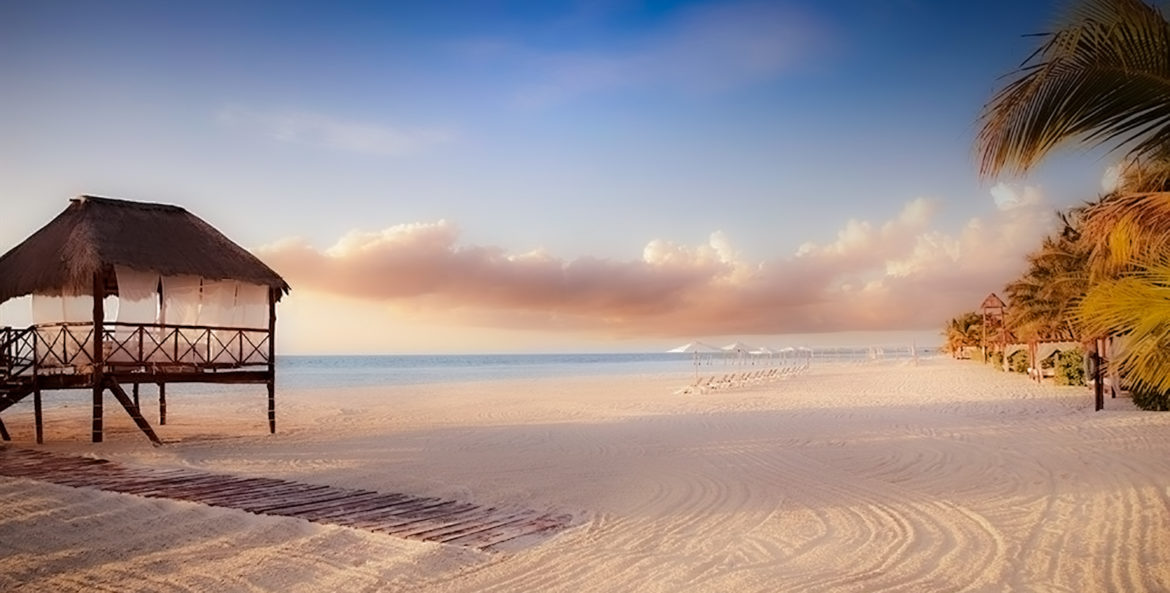Remote work as an employer
Best practices to make remote work productive and in line with the company’s business objectives
In past articles, we have talked about remote work but always from the perspective of the employee. However, for there to be an employee working from home, there must be a company that employs him and, above all, allows him to work from home.
As global concern over COVID-19 (coronavirus) continues to grow, businesses across the planet are challenged to maintain high levels of service to their customers while taking action to keep employees safe from this global health challenge.

This requires Unified Communications and Contact Center solutions that stay up and running to offer continuous operation, the highest quality of service, and the best experiences, even while your workforce needs to work remotely to satisfy completely the needs and expectations of customers.
For this reason, and based on the experience of countless companies, a series of best practices have been defined such as the ones we present to you today.
A remote worker is any employee (knowledge worker, agent, back-office) who works from home, without office space on company premises. There are several key reasons why companies choose to use home-based workers:
• Find, retain and motivate the best employees
• Overcome the shortage of agents in sectors where there are high employment opportunities
• Serve during peak periods and provide 24×7 service
• And, of course, meeting the global health challenge we have today.
Six Best Practices for Success with a Remote Workforce
Whether you are planning to deploy remote workers, including Contact Center agents, or are already doing so, learning from the experience of others can improve the success of your program. The following six recommendations emerged from interviews with companies that use remote workforces extensively.
Best Practice #1
Document remote work policies and procedures
There should already be a written policy governing remote workers with clear and uniform rules. This policy should also make it clear that all company policies apply, in addition to those specifically for remote workers.
With each remote worker, including Contact Center agents, the manager should review policies and procedures together. Focus on job responsibilities, organizational and departmental goals and objectives, customer impact, and employee job performance.
For all workers transitioning from traditional in-office roles to a remote base, however temporary, strengthen your policies and practices regarding the protection of confidential customer information. This is especially important for employees in customer service roles.
Best practice #2
Select the right people for the job
Some employees are great people and hard workers, but not necessarily the best people to work from home. Personality is only one aspect of this.
Most remote workers may have access to sensitive customer information, such as financial or health information. For those reasons and more, make it part of your screening process to do background checks.

Best Practice #3
Ensuring a good work environment
Make sure the remote worker has enough Internet access to connect to corporate resources. Many employees, but certainly not all, have Internet connectivity that might be available for work use. For those who don’t, you may need to provide connectivity for work use (Wifi, hotspot, etc.).
Potential remote workers can’t see themselves working from home. From their own experience, the written policy should tell them what works and explain what you expect from your workspace. These guidelines should be carefully discussed with each remote worker.
Almost any room can serve as an office, but selecting the right work area is essential for success. A dedicated office in an area with minimal disruption maximizes efficiency and employee comfort.
For workers who must interact with the customer and contact center agents, ensure that sufficient voice quality can be delivered to the employee given the employee’s connectivity. This could include the use of voice over IP services, cellular telephony, and home telephony services. Encourage employees to look for locations that minimize background noise.
Best practice #4 –
Equip remote workers to succeed
Hardware
Remote workers often need a physical phone or headset (noise-canceling headphones are best) and a computer. If your company provides the PC or enforces the system requirements upfront, IT support team will thank you later.
Applications (Software)
Remote workers need the same access to applications, tools, and the like as when they are in the office (for example, presence and instant messaging). For Contact Center agents, the same access to supervisors as agents in the office; likewise, supervisors who work remotely need access to their contact center management tools for their agents.
Connectivity
Connectivity is also another key consideration. Using a second analog phone, or cell phone line provides consistent quality without network engineering. However, there is an initial activation cost and an ongoing monthly charge.

Voice over Internet Protocol (VoIP) eliminates those costs, as well as usage charges for remote workers, but may require SIP voice connectivity over the Internet or virtual private network (VPN) support, depending on rules and regulations of the country; this will generally provide transparency into features.
Regardless of SIP or VPN, VoIP relies on a strong Internet connection that may not be available; don’t take broadband for granted. Also, for VoIP, make sure your IT department can assess the Internet performance of each remote employee before implementing your remote agent program.
Provide employees with easy-to-use documentation and job aids on how to log in to remote network services like VPN, phone services, etc., including password procedures.
Best Practice #5
Make experts readily available
Remote workers need access to the same subject matter experts and support as if they were in the office. “Presence” is a technology familiar to instant messaging users, where a list of names is accompanied by icons indicating whether each person is logged in. When presence is incorporated into a business, finding an expert is just as easy for the remote worker as it is for the in-office worker.



Best Practice #6
Manage and monitor
Remote workers must meet the same productivity goals as in-office workers. Predictable check-in times provide remote workers with peace of mind. Additionally, remote employees need to be included in team meetings and events so they can stay socially and culturally connected.
Remember to keep training and mentoring remote workers, and reward good performance.
If you manage contact center employees, a properly implemented remote contact center solution will provide remote workers and supervisors with the same capabilities as a call center based at your company headquarters. This includes the ability to monitor performance in real-time and meet recording and quality requirements.
Remote work is feasible. To create an effective remote work program, all you need to do is think about the people, policies, and procedures. Likewise, you can get advice from a company dedicated to providing solutions related to remote work.
And as always, if it’s you who wants to work remotely and from the Riviera Maya, we can help you find that perfect place to have the best of both worlds.

How inflation affects the real estate market
With inflation looming on the horizon, many real estate investors are wondering what this means for their assets and businesses. With rising inflation, we see consumer prices rise, but what effect does this have on real estate?
Inflation has many side effects related to real estate, typically including higher mortgage rates, higher asset prices, long-term debt depreciating, construction becoming more expensive, and more. Let’s take a closer look at the role of inflation in real estate assets, mortgages and how investors can position themselves in a high inflation environment.
Inflation can lead to higher mortgage rates
Generally speaking, as inflation rises, so do interest rates. As inflation rises, central banks typically raise short-term rates to put downward pressure on the inflation environment.
If interest rates are low, more consumers tend to borrow, which means they have more money to spend. This causes inflation to rise. As central banks raise interest rates to fight inflation, consumers will tend to save more rather than spend because higher interest rate returns are more attractive. The hope is that with less consumption by consumers, inflation will decrease.
Bottom line: An inflationary environment typically sees higher mortgage rates.
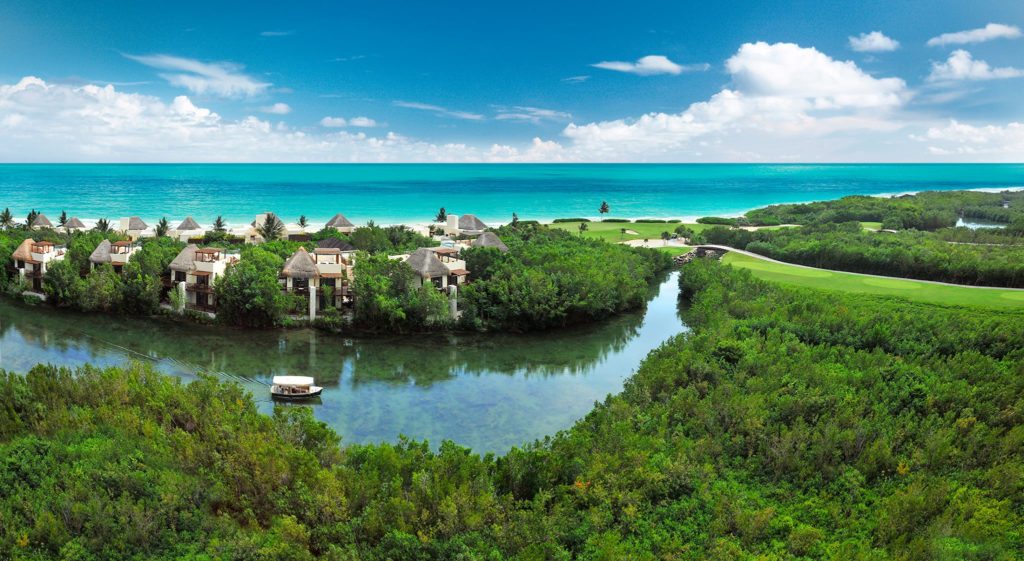
Inflation can lead to higher asset prices
As the price of things increases with inflation, so does real estate. Generally speaking, when inflation rises, home prices and other real estate assets do the same. That said, because we also see a rise in mortgage rates, this tends to put downward pressure on demand for real estate because debt becomes more expensive.
This, in turn, can put downward pressure on asset prices as demand declines.
Inflation eats the historical debt
Your existing debt gets cheaper as inflation rises. Consider the following example:
5 years ago you bought a property for $125,000 with a down payment of $25,000.
You have a 25-year, $100,000 mortgage at a 3% fixed interest rate.
Assume that inflation increases by 3% each following year.
Every year thereafter, you only pay $475, but the value of your money has increased by 3% each year.
Therefore, the relative cost of your debt decreases each time inflation hits.
Inflation causes construction costs to rise
Because things become more expensive with inflation, the cost of materials used in construction will also increase. There is a lot that goes into real estate development, and all of those prices will generally rise as inflation rises.
It is widely understood that inflation increases wages, machinery costs, and construction materials. It also puts developers and investors in a scenario where cost overruns are much more possible. If you planned a build several years ago in an inflationary environment, your cost estimate will need to take into account inflation for all building materials and labor.

Superior residential profitability during inflationary periods
The good news for investors with single-family homes (SFHs), condos and multi-family homes in their portfolios is that these asset classes tend to outperform in inflationary environments.
According to a Stanford University study, residential real estate is historically a safe haven investment during inflationary periods. In the study, they found that with the inflation of the 1970s, home prices rose relative to the size of the economy.
The WSJ points this out more eloquently: “Owners of residential and commercial real estate are often better off in times of rapid inflation than owners of stocks or bonds, economists say. Office, retail, and apartment rents are often tied to consumer prices and rise with inflation, raising property income. Inflation also makes construction more expensive, which benefits owners because they can expect less competition from new buildings.”
Risk: The risk to investors is not to increase rents regularly to keep up with inflation, or to prepare for higher-than-expected inflationary pressures. Just think about it, if inflation is rising 3% each year and you’re not raising rents, you’re taking a loss that gets worse over time.
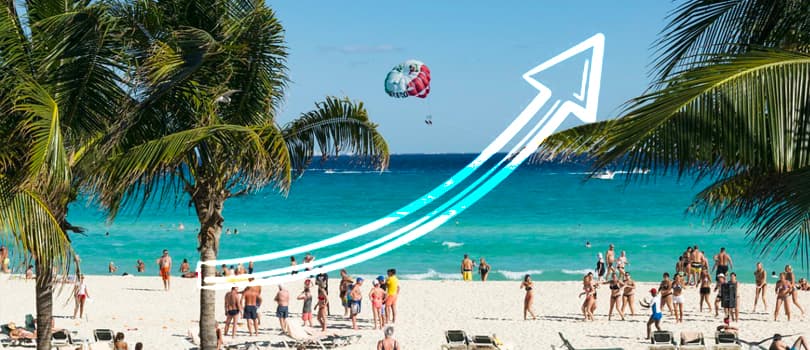
Rents
Studies have shown that historically high periods of inflation also saw a similar increase in rental prices. According to a recent study, during the period of high inflation from 1973 to 1983, “Rents grew a little less than headline inflation, but a little more than core inflation without food and energy… ” Finally, the American Housing Survey shows that the median rent increased at an average annual rate of 8.5%, which exceeds all inflation measures.
Inflation and real estate: a hedge?
Since, under most circumstances, an inflationary environment leads to higher rents and higher asset prices, real estate is considered a great hedge against inflation. This is due to three general phenomena:
- Rents go up with inflation
- The value of your property increases with inflation
- The debt on your asset is devalued as the value of that debt decreases.
That said, investors should be wary of high-inflation environments, primarily because the cost of borrowing will rise, putting downward pressure on your cash flows and real estate demand if you want to liquidate. It also makes developing new real estate more expensive.
With more upsides than downsides, an inflationary environment can be a positive for real estate investors if they make smart purchases and test their portfolios against inflationary pressures, such as rising interest rates.

Vanilla; a taste of Mexico for the world
Vanilla is a member of the orchid family, a sprawling conglomerate of some 25,000 different species, and is native to South and Central America and the Caribbean; the first people to cultivate it seems to have been the Totonacas of the east coast of Mexico. The Aztecs acquired vanilla when they conquered the Totonacs in the 15th century; the Spanish, in turn, obtained it when they conquered the Aztecs. One source claims it was introduced to Western Europe by Hernán Cortés, though at the time it was overshadowed by his other imports from the Americas, which included jaguars, opossums, an armadillo, and a full team of ballplayers equipped with rubber balls.
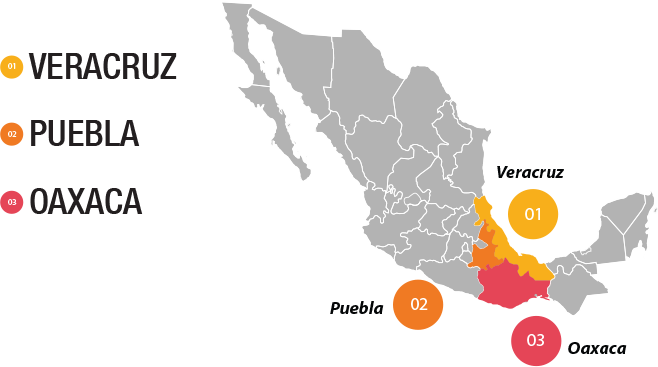
The Aztecs drank their chocolatl with a dash of vanilla, and the Europeans, once they got used to the drink (one horrified Spaniard described the chocolate as “a drink for pigs”), did the same. Vanilla was thought to be nothing more than an additive to chocolate until the early 17th century, when Hugh Morgan, a creative apothecary in the employ of Queen Elizabeth I, invented non-chocolate and vanilla-flavored confections. The Queen adored them.
In the following century, the French used vanilla to flavor ice cream, a delicacy discovered by Thomas Jefferson in the 1780s, when he was living in Paris as an American minister to France. He was so excited that he copied a recipe, now preserved in the Library of Congress.
Vanilla was a latecomer to recipe books. According to food historian Waverley Root, the earliest known vanilla recipe appears in the 1805 edition of Hannah Glasse’s “The Art of Cookery,” which suggests adding “vanelas” to chocolate; the first American recipe, for vanilla ice cream, is found in Mary Randolph’s “The Virginia Housewife” (1824). In the second half of the century, the demand for vanilla skyrocketed. Not only was it the established flavor of choice for ice cream, but it was also an essential ingredient in soft drinks, including Atlanta chemist John S. Pemberton’s Coca-Cola, which went on sale in 1886, was impressively promoted as an “esteemed Brain Tonic and Intellectual Drink.”
The problem with vanilla is that it’s expensive. Vanilla is the second most expensive spice in the world (after saffron) because its production requires a lot of labor. Vanilla grows as a hanging vine, reaching a length of up to 100 meters, from which sprout pale greenish-yellow flowers, about four inches in diameter. These, in Mexico, the native habitat of vanilla, are pollinated by melipona bees and, occasionally, hummingbirds. Each flower remains open for only 24 hours after which, if not pollinated, it withers, dies, and falls to the ground. Frankly, given its sexual proclivities and a narrow window of opportunity, vanilla’s very existence seems like an evolutionary long shot.



If pollination is successful, a pod-shaped fruit 6 to 10 inches long, filled with thousands of tiny black seeds (the attractive spots on good-quality vanilla ice cream), develops. However, vanilla transplants to tropical and presumably vanilla-friendly regions around the world, without the proper bees, remained decidedly podless until 1841, when Edmond Albius, a 12-year-old slave boy on the island of Réunion in the Indian Ocean, found out how to hand pollinate vanilla flowers using a stick and moving his thumb. The simple technique had far-reaching implications. Vanilla plantations sprang up all over the world, from Madagascar to India, Tahiti, and Indonesia. Today, about 75 percent of the world’s vanilla comes from Madagascar and Réunion.
Vanilla beans, which look like green beans at harvest, are individually hand-picked as they ripen and then undergo a lengthy, multi-step curing process. The end result is the desiccated but aromatic black pods sold by spice purveyors. The pimple of the vanilla plant (the pods take nine months to mature) and the strenuous nature of harvesting and post-harvest preparation means that we, internationally, do not produce much vanilla. Total world production is about 2,000 metric tons, which is a drop in the ocean when it comes to vanilla demand. 99 percent of the vanilla-flavored products on the market, from vanilla-flavored vodka to vanilla wafers to vanilla pudding, don’t actually contain vanilla.
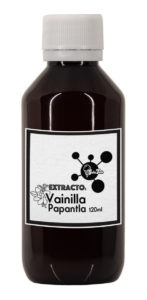
Vanilla is an amazingly complex and subtle spice, containing approximately 250-500 different flavor and fragrance components. The most outstanding one of them is vanillin (4-hydroxy-3-methoxybenzaldehyde) which, despite its clunky chemical name, is relatively easy to synthesize. Vanillin can be made from petrochemicals; from lignin, a byproduct of the paper and wood pulp industry; and eugenol, a component of clove oil. It can even be produced from castoreum, a honeydew-like secretion from the anal glands of beavers, though this is undoubtedly a minor source.
Synthetic vanillin is at least twenty times cheaper than real vanilla, which explains why it is manufactured and sold to the tune of 20,000 metric tons per year. If you’re nibbling on something vanilla-flavored or smelling something vanilla-scented, chances are you’re enjoying synthetic vanillin, not natural vanilla.
A product whose origin is in Mexico but that has transcended the test of distance and time. So today it is the favorite flavor in ice cream on the planet over chocolate.
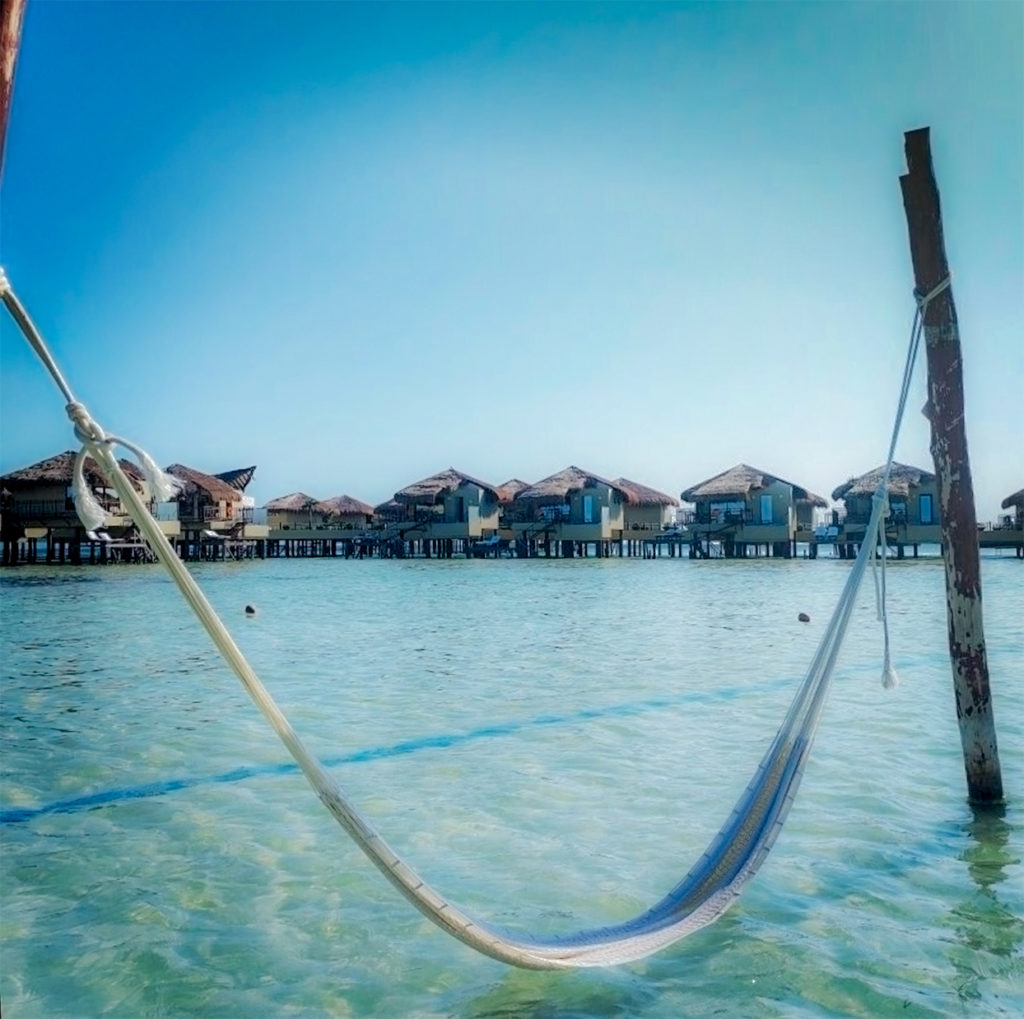
Secret Corners of the Ribiera Maya: Punta Maroma
Punta Maroma is a beach located in Mexico, state of Quintana Roo, on the Yucatan Peninsula. Punta Maroma beach is located on the coast of the Caribbean Sea.
Set in the municipality of Solidaridad at 20°44′16″N 86°58′03″W. It is located within the tourist area known as the Riviera Maya, the closest land route is Federal Highway 307. Punta Maroma is 35.3 km (21.9 mi) from Cancun International Airport (CUN) and about 10 kilometers (6.2 mi) northeast of Playa del Carmen. In 2010 it had a population of 58 inhabitants.
Known for its white sand coasts, crystal clear waters, and coral reef, which is part of the Mesoamerican Reef System, the second-largest reef in the world, it has been chosen as one of the best beaches in Top Best Beaches.
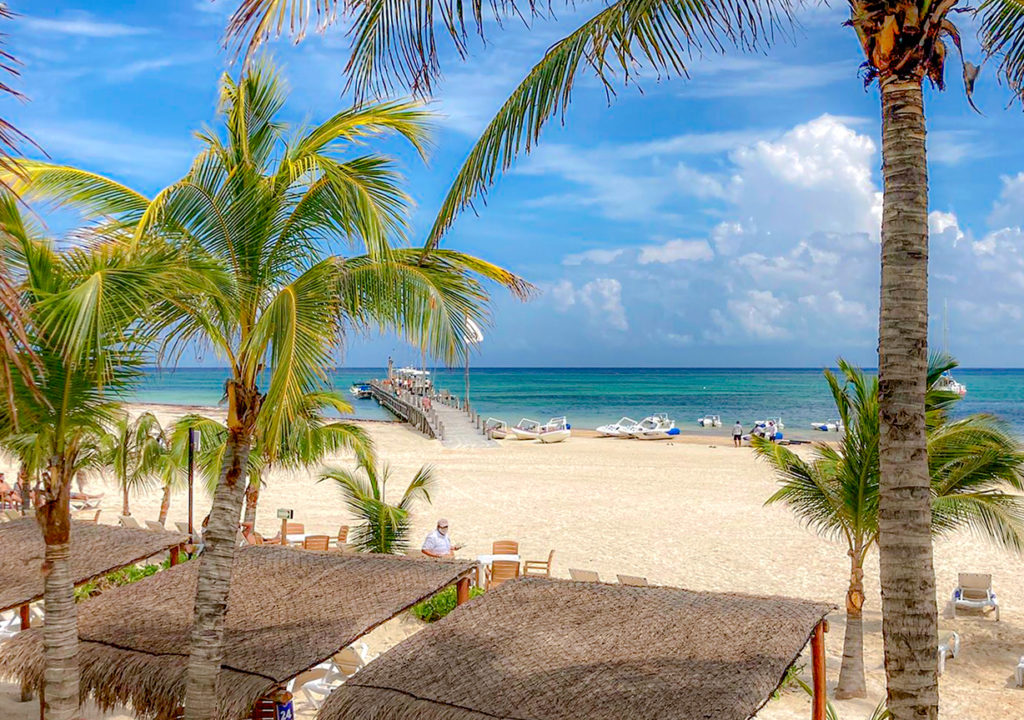
“The area where Punta Maroma beach is located was inhabited by the Mayans. Most of the native population died from smallpox and the conquest in the early 16th century. “
The beach is currently Federal concession property, tourists have access by paying USD 49 per person and includes the new Maroma Adventures Day Pass, which includes access to the beach club, shower amenities, unlimited buffet food, snacks, and an open bar with national drinks.
Access is through Maroma Adventures, which is an incredible beach club that is located just 25 minutes north of Playa del Carmen in the Riviera Maya. It has an extensive variety of exciting land and water activities such as speedboats, snorkeling, diving, jet-skiing, parasailing, and romantic sunset catamaran rides.
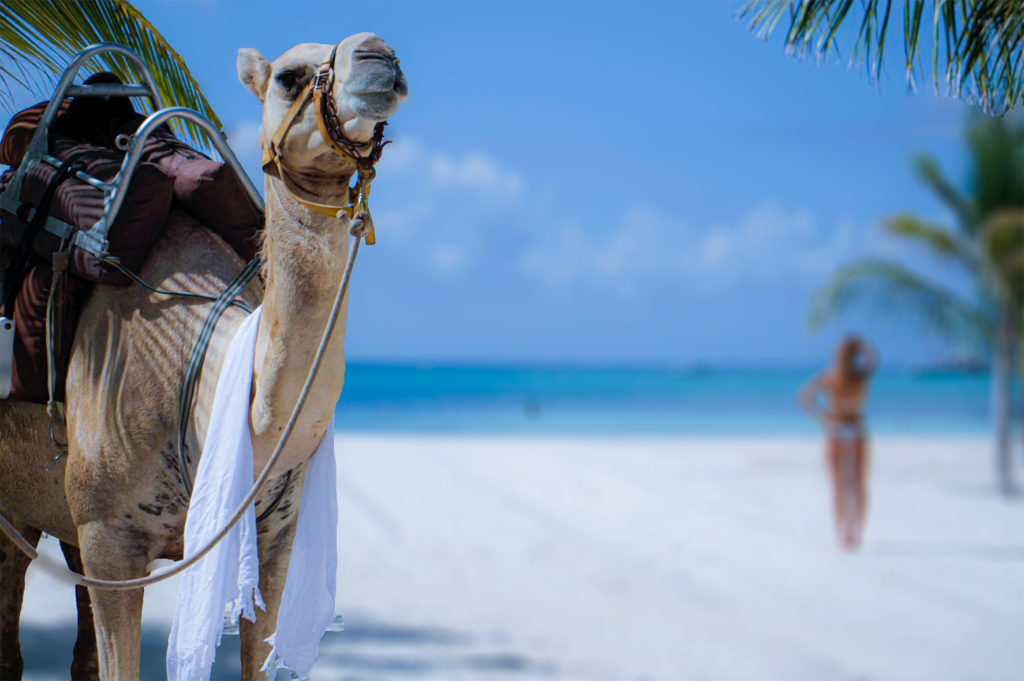
It also offers the extraordinary experience of riding a camel, enjoying a relaxing horseback ride, and driving an ATV through the jungle. Likewise, Maroma Adventures has spacious and beautiful spaces to celebrate events in front of the beach, and has a restaurant with an ocean view where it is possible to taste a variety of local dishes.”
Punta Maroma is definitely one of the most beautiful coastal areas of Quintana Roo. It is attractive because, in addition to its smooth, white sand and its rugged nature, it is the favorite beach for newlyweds, who enjoy their honeymoon there, although there is not a very large tourist infrastructure in the area. The accommodation centers that settle there are mainly complexes of cabins to stay.
Due to its virgin and unaltered environment, Punta Maroma is outlined as a refuge of peace and tropical tranquility. For many of the travelers who visit this area of Quintana Roo for the first time, Punta Maroma is presented as a pool of crystal clear turquoise waters, perfect for swimming and diving. It also stands out for diving purposes, due to the colorful reefs that are found there.
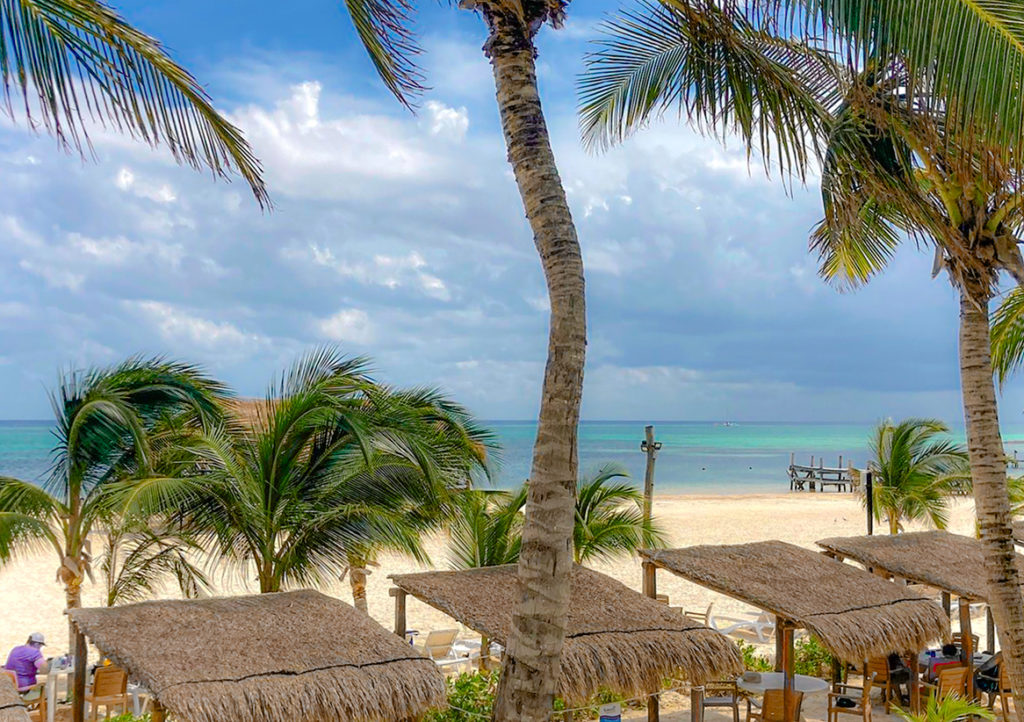
There are hotel alternatives in the area that have all the services related to relaxation, such as spas, steam baths, temazcal, tai chi, yoga, etc. And for diving enthusiasts, there are several places for snorkeling, swimming with dolphins, horseback riding, kayaking, playing golf, etc.
It is especially recommended to take a walk along the underground freshwater river that flows into the vast Caribbean Sea. One thing to keep in mind is that Tres Ríos is located between Punta Maroma and Punta Bete, an interesting theme park like few others, as well as a freshwater river and other wonders of enormous eco-tourism appeal.
What tourists are guaranteed in Punta Maroma is a set of almost virgin beaches, landscapes that are so beautiful that they take your breath away and a corner with a privileged climate to put aside problems and dedicate yourself to enjoying yourself in a big way. In addition, Punta Maroma is located not far from Punta Bete, another inescapable reference when it comes to paradisiacal places in the Mexican Caribbean.
Punta Bete also has unmissable beaches, a calm sea, suitable for various water sports, cabins, rustic restaurants, and a camping area. Visiting Punta Maroma can be complemented with a trip to Punta Bete and also to Xcalco, a nearby site that, in addition to a sea of gentle waves, includes a small but very interesting archaeological site.

